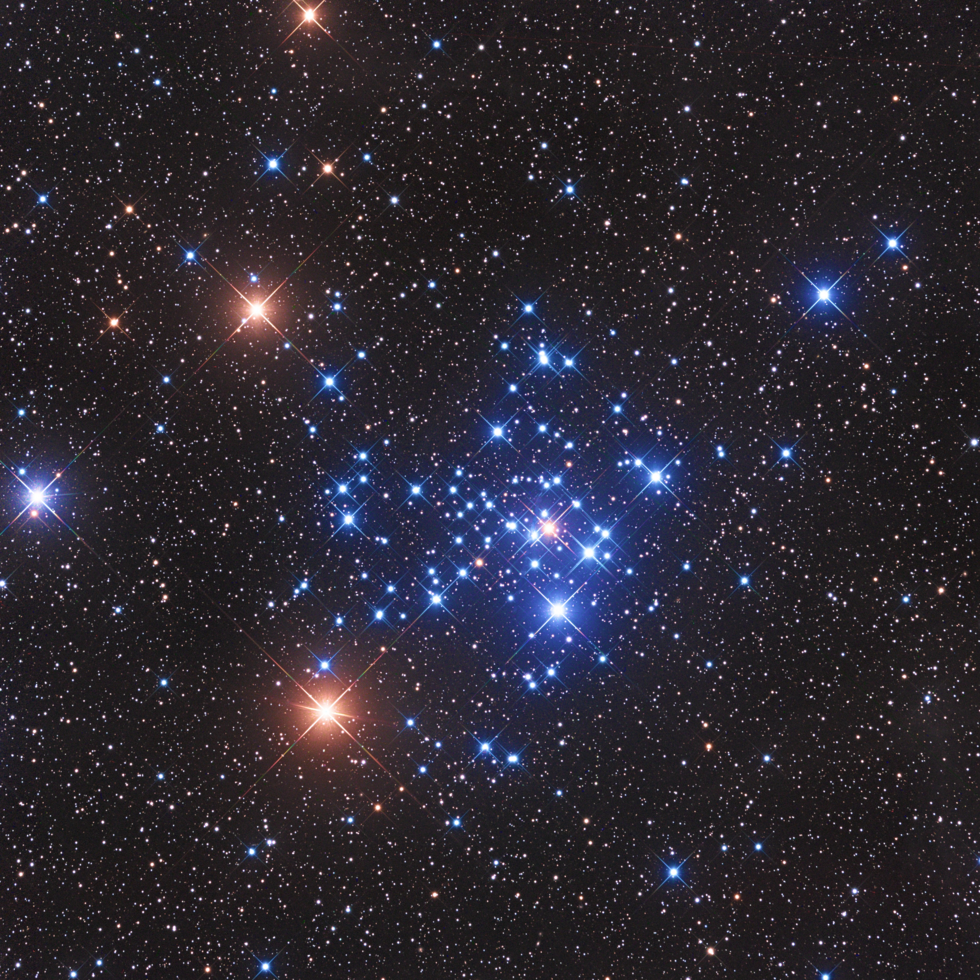Christmas Lights of the Southern Beehive
Christmas Lights of the Southern Beehive
Nearly 1,300 light years from Earth, in the southern constellation of Carina, the open star cluster NGC 2516 shines from the light of thousands of stars.
Stars forming a halo around this body stretch 1,600 light years from side to side. From Earth, light from these nascent stellar furnaces fill a region of sky as far across as a full Moon.
Although some individual members of The Southern Beehive can be seen with the naked eye under dark skies, this family of stars was first recognized as such by French astronomer Nicolas-Louis de Lacaille in the 1750s.
Remarkably, he did so using a telescope 13 mm in diameter - about the size of a Sharpie marker! This may not sound impressive, but this was still enough of an instrument for de Lacaille to see objects more than three times dimmer than what he would have seen with the unaided eye.
The open cluster is fairly young, first forming roughly 120–135 million years ago, during the peak of the age of dinosaurs. At the time light in this image left its source, only one country in Europe - Constantinople - had more than 100,000 inhabitants.
Composite image by The Cosmic Companion, created from eight red, green, blue, and luminance images recorded over 40 minutes on Christmas Night - 25 December 2021, using the 0.5-meter CHI-2 telescope in Chile, available through Telescope Live.
Created with Astro Pixel Processor, polished up in BeFunky, and an annoying photobombing satellite was pew-pewed out with Inpaint.
Stars forming a halo around this body stretch 1,600 light years from side to side. From Earth, light from these nascent stellar furnaces fill a region of sky as far across as a full Moon.
Although some individual members of The Southern Beehive can be seen with the naked eye under dark skies, this family of stars was first recognized as such by French astronomer Nicolas-Louis de Lacaille in the 1750s.
Remarkably, he did so using a telescope 13 mm in diameter - about the size of a Sharpie marker! This may not sound impressive, but this was still enough of an instrument for de Lacaille to see objects more than three times dimmer than what he would have seen with the unaided eye.
The open cluster is fairly young, first forming roughly 120–135 million years ago, during the peak of the age of dinosaurs. At the time light in this image left its source, only one country in Europe - Constantinople - had more than 100,000 inhabitants.
Composite image by The Cosmic Companion, created from eight red, green, blue, and luminance images recorded over 40 minutes on Christmas Night - 25 December 2021, using the 0.5-meter CHI-2 telescope in Chile, available through Telescope Live.
Created with Astro Pixel Processor, polished up in BeFunky, and an annoying photobombing satellite was pew-pewed out with Inpaint.
SPECIFICATIONS
Telescope
CHI-2
Camera
FLI ProLine PL9000
Location
El Sauce Observatory
Date of observation
25 December 2021
Filters
LRGB
Processing
APP, BeFunky, Inpaint
Credits
James Maynard


